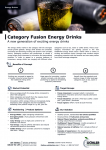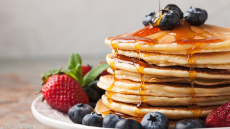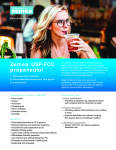FoodNavigator-USA caught up with some key players in the sweetener industry to see what's next for monk fruit.
“The demand from consumers for sugar reduction solutions that are not artificial suggests a bright future for monk fruit and other non-artificial sweeteners,” said Jim Carr, director of global ingredient technology for sweeteners at Tate & Lyle.
“Launches with monk fruit are more likely to feature claims linked to trends such as ‘naturalness’, ‘plant-based’ and ‘free-from’ than launches that contain any other type of intense sweetener.”
In a global sweeteners market expected to grow at a CAGR of 4% to reach $12.5 billion within five years, Global Market Insights reported that monk fruit applications grew at 20% in 2021, followed by stevia at 15% and sugar alcohol sweeteners at 4%.
Destined for the premium market
Nancy Hughes, president at Apura Ingredients – a leading supplier of sweeteners to the North American market - said monk fruit and stevia are currently positioned in the middle-level product market but “are destined to be different in their market directions.”
“The stevia industry is more suitable in the direction of middle-to-low and middle level markets, whereas monk fruit is more appropriately positioned in the mid-to-high or high-level product market,” she said, putting forth that monk fruit has a better overall taste and the advantage of being clean label.
"At the same time, monk fruit can be mixed with different sweeteners in the market to achieve better product experience,” she added.
Other monk fruit attributes include no-calorie sweetness, the absence of blood sugar spikes and a clear sugar-from-fruit connection.
Plays well with others
Native to southern China and first used by Buddhist monks in the 13th century, the small round fruit contains sweet compounds called mogrosides that can be up to 300 times as sweet as sugar with a slower onset of sweetness than sucrose.
They may be used alone or paired with bulk sweeteners such as allulose and erythritol to “create a sweetener that has parity with sucrose in applications making it a plugin for sugar” while providing volume to mitigate monk fruit cost, which continues to be relatively expensive compared to stevia, said Thom King, CEO at sweetener specialist Icon Foods.
“Monk fruit also has interesting masking and sweetness modulation qualities that really come through when monk fruit is blended with other glycosides like stevia,” King added.
“The combination of the two is able to mask off-notes in many applications as well as masking each other’s respective off-notes, being melon rind with monk fruit and licorice with stevia."
He advises that formulators should always aim for 40% mogroside V unless blending with other sweeteners or a sweetness modulator since some lower grade monk fruit extracts are more likely to carry off-notes.
Ripe for innovation
“Innovation in monk fruit sweeteners continues, with additional offerings being introduced for specific customer needs,” Carr said.
“Different sweetness potencies and purities allow for specific applications to be optimized for regulatory compliance, label attractiveness and use level/taste performance to be delivered for specific applications.”
Several firms are also working on technical innovations to bring prices down. In 2019, Chinese plant-based sweetener producer Layn Corp. launched the ‘Super V Fruit,’ a proprietary variety of monk fruit designed to naturally produce 20% more mogrosides.
North Carolina-based Elo Life Systems, meanwhile, is retooling the DNA of easier-to-grow melon varieties to produce mogroside V with plans to introduce a new natural sweetener with a cleaner taste profile, more affordable price tag, and a higher sweetness intensity than monk fruit extracts currently on the market.
Icon Foods, in turn, is working with a partner on a project to produce mogroside V via glucosylation using enzymatic bioconversion. This process, King explained, transforms a lower grade mogroside V starter material to a higher-grade material, as with glucosylated steviol glycosides.
"We are a year out from rolling this out, but this should stabilize pricing and bolster the supply chain," he added.
Innovation in the extraction and separation processes is focused on conservation to minimize water and energy use while improving product yield, quality and cost.
At field level, producers are experimenting with bumblebee pollination to replace artificial pollination, introducing germ chitting (the process of improving the content of the glycoside V in fruit through seedling optimization) and exploring mechanized automatic picking.
Growing output and demand
Since the 2010 FDA approval of monk fruit as a common sweetener, demand has continued to grow, with a 70% increase in the launch of products sweetened with monk fruit from 2013 to 2014, according to information provided by Apura Ingredients.
This growth in demand prompted multi-million dollar investments by producers including Monkfruit Corp., Layn Corp. and GLG Technologies to expand growing and processing capacity in China’s greater Guilin area. By June 2019, there were an estimated 4,300 consumer products sweetened with monk fruit on the market and 8,000 by June 2021 – with applications across beverage, dairy, tabletop sugar substitutes, baked goods, cereals and nutritional supplements.
“Where we find the greatest uptake is in the ready-to-drink beverage space,” King said. “Monk fruit pairs very nicely with coffee drinks and functional beverages.”
Tate & Lyle says that monk fruit is particularly well-suited for use in reduced-sugar chocolate milk formulations where it delivers a milk chocolate-type profile and adds that mogrosides are very useful in fruit-based applications.
In terms of satisfying the call for monk fruit, Carr noted that supply has historically expanded to support demand and doesn’t see any reason for that to change.
“As monk fruit becomes more widely adopted, fruit pricing will become more stable, which will attract food and drink manufacturers, and more growers,” he predicted.
Monk fruit’s typical harvest season runs from September to November, and King reports that this year’s above-average crop means that pricing should be stable but tends to go up as the year goes on.
“It is always wise to buy long on this commodity,” he added. “Place your POs through the end of the next harvest.”
According to Apura Ingredients, the estimated price per kilo will be between $300 and $340 in 2023.
Upcoming supplier webinars
On-demand webinars
"fruit" - Google News
October 24, 2022 at 11:55PM
https://ift.tt/nq697Ug
Monk fruit finds premium, blend-friendly sweet spot in sugar reduction space - FoodNavigator-USA.com
"fruit" - Google News
https://ift.tt/ZTaOySC
https://ift.tt/ICsMvUk
Bagikan Berita Ini



















0 Response to "Monk fruit finds premium, blend-friendly sweet spot in sugar reduction space - FoodNavigator-USA.com"
Post a Comment